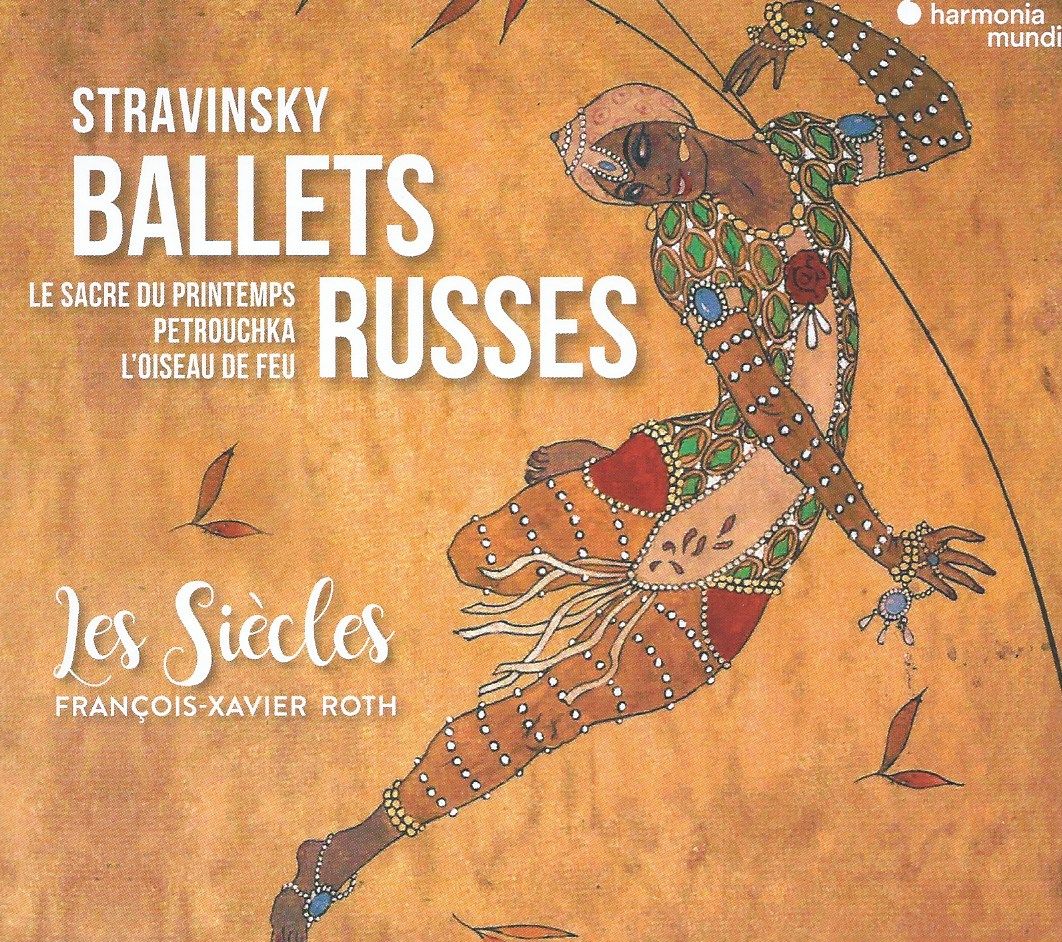Ballets Russes from Roth
Rediscover Stravinsky's seminal ballets on authentic instruments; discover some new friends in "Les Orientales"

This is a labour of love for conductor François-Xavier Roth. His research into the famous Ballet Russes shows that not only was that organisation they involved intimitely with Stravinsky's three famous ballets recorded here (Le sacre du printemps, Petrushka and L'oiseau de feu), but the Ballets Russes also enjoyed a wide repertoire. To hear some of that repertoire here - in the form of Les Orientales, which contains music by Glazunov, Christian Sinding, Anton Arensky and Grieg - and all performed with a period authenticity (for Stravinsky!) is nothing short of revelatory. Roth conducts his group Les Siècles with gusto but also with the skill of a master restorer - the thickest textures in Le sacre and Petrushka become crystal clear; his rhythms are lighter many listeners will be used to, taking us back to the dance while adding an extra layer of buoyancy to the performances.
Nowhere is this heard better than in the final "Danse sacrée" (Sacrificial Dance) of Le sacre:
Of course while the body of this disc is Russian music, it is entirely apposite that there is a French orchestra here, given the works' Parisian roots. Remember that here we hear the works performed with gut strings, the characteristic sound (sometimes described as "hollow") of French bassoons, small-bore brass. Roth performs a reconstruction of the original 1913 version of Le sacre, not the later revision that is so often heard today, another revelatory aspect. The changes all add up, while the sonic restoration is miraculous, particularly in Harmonia Mudi's superb recording.
Petrushka positively sparkles, nowehere more so than in the "Fête populaire" that opens the fourth part or in what we'll hear now, the famous "Danse russe" of the first tableau::
Why Les Orientales is not mentoined at all on the front cover I remain unsure ... but it is this "Divertissement choréographique" to a choreography by Mikhael Fokine that adds yet anotehr layer to this wonderful release. Les Orientales was performed on June 25, 1910, along with L'oiseau de feu (The Firebird); thus they make perfect disc partners. The music of Les Orientales is stunning. The sheer joy of Glazunov's "Entrée des Sarrazins" from Raymonda is infectious, its energy tempered by the "Danse orientale" from the same source. Here's that delicious "Danse orientale":
Some of the movements may well sound familiar: Arensky's "Danse égyptienne" for example (from his Nuits égyptiennes), but let's explore a little, and hear a snake-charming oboe in that composer's "Charmeuse des serpents":
When it comes to the complete L'oiseau de feu, this has to be one of the most sensuous performances out there. Hearing the ballet in full is a treat, too (most will know the music via the Suite) - and this is the most compelling complete performance I know. The flitterings and the scamperings of the firebird itself are superb, as is this beautiful "Jeu des princesses avec les pommes d'or" (Game of the princesses with the golden apples):
That movement occurs near the delicate traceries of the more famous "Khorovod," the "Ronde des princesses" (Round dance of the Princesses), which here moves along elegantly:
Hearing the piece complete has many advantages - we hear the intimations of the theme of the "Danse infernale" well before the explosive event itself, which puts its dynamism in truer persepctive, for example. When it comes, that "Danse infernale" is vibrant, exciting, and eminently in the spirit of the dance:
The closing "Second Tableau" is magnificent, a truly shining end to a performance of real distinction:
Although in French and without subtitles, this is an enlightening introduction from Roth in which his enthusiasm for this project shines through:
A magnificent release - one that will surely act as an eye-opener for many!
